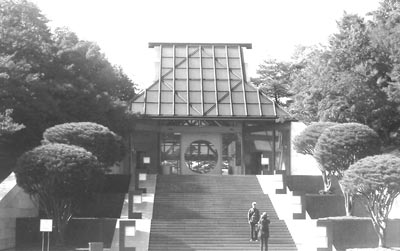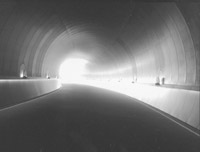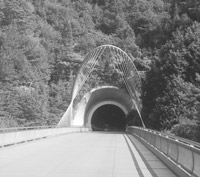Miho Museum near Kyoto
What to do on a free day in Kyoto? On our trip “Japan’s Cultural Treasures” with Overseas Adventure Travel (Cambridge, MA; 800/221-0814, www.oattravel.com), Oct. 10-25, 2007, we decided to try something other than temples, which certainly are abundant in the area.
So my wife, Anne, and I headed for the Miho Museum, which was designed by I.M. Pei and is tucked into a mountain slope in Shiga Prefecture, about a one-hour trip from the city.
The front desk folks at our Hearton Hotel kindly provided us with a detailed set of directions in English, which were most helpful. Earlier on the tour, our OAT guide, Mosaka Yamada, had given us a tutorial on how to use the subway system, so we felt confident.
The trip required a subway ride (10 minutes), one train (15 minutes) and then a 50-minute bus ride. The bus ride was an adventure in itself, since most of the roads were like driving a one-lane bridge. It was remarkable how drivers would stop for opposite-direction traffic, sometimes large trucks or other buses, yet never honk a horn.
We headed toward Lake Biwa and then climbed into the Shigaraki Mountains. We saw countryside unlike what we had been seeing on our tour. It was much more rural, with some small farms and heavily wooded mountains. We were truly in the “boonies.”
The Miho Museum reminded me of the Getty complex in Los Angeles. Both, in my opinion, are major works of art by themselves alone. However, with the Miho you don’t see the museum until you walk through a 650-foot tunnel lined with dulled stainless steel and then cross a 400-foot bridge over a ravine.
At the tunnel’s mouth, the approach to the museum is still deferred by a fan of 96 galvanized suspension cables. Even then, more than 80% of the museum is underground. One website says that no photograph, no matter how excellent or how close to being a work of art itself, can do justice to the experience of visiting this site, and I agree.
Once inside, an immediate view is of the surrounding hills, devoid of everything except in the far distance the beautiful Shinji Shumeikai International bell tower (also designed by Pei) and an accompanying and equally beautiful Meishusama Spiritual Hall. All else is wilderness, part of a 247-acre mountainous preserve.
The objects of the museum’s collection range from Japanese tea ceremonial art, Buddhist art and ceramic ware to art of the ancient world. The collection contains over 2,000 works and features items from Asian and Western cultures. We spent about 2½ hours in the museum.
For the two of us, our visit cost a total of $60 (subway $6, train $8, bus $28, museum $18). The same trip via a tour group would have cost a total of $245, so we saved a lot of money while still having a great adventure.
Our entire OAT trip cost $4,675 per person, including airfare to and from San Francisco and a 3-day pre-trip extension in Tokyo.
One last word on OAT — out trip included Tokyo, Hakone, Kanazawa and Kyoto and was terrific. We had a small, congenial group (14 persons) and a great guide, and the pace and coverage were excellent.
JACK DINI
Livermore, CA




